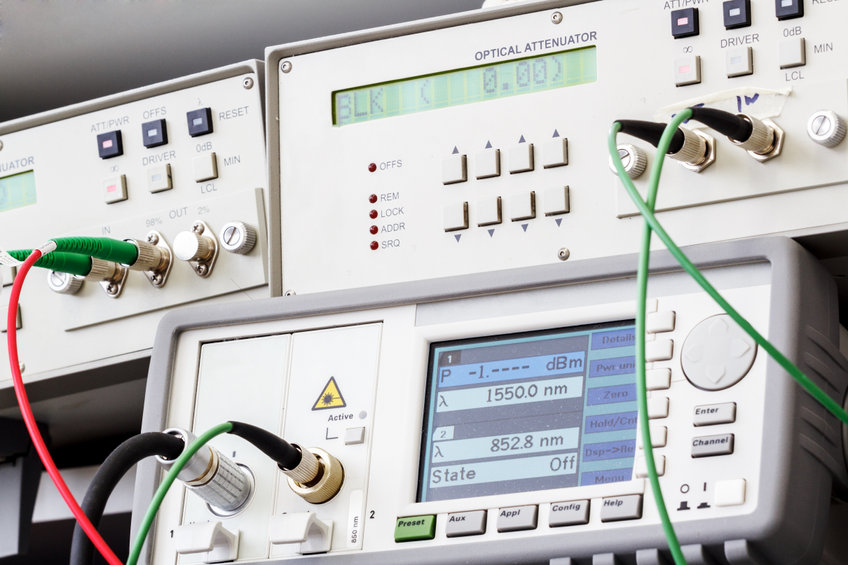Why Optical Fiber Testing Tools Is Important for Network Maintenance
In the realm of network upkeep, the significance of optical fibre testing devices can not be overemphasized. These advanced tools play a critical role in determining faults and efficiency concerns that could undermine the stability of information transmission. By using tools such as Optical Time Domain Reflectometers and Optical Power Meters, network experts can make certain compliance with sector requirements while proactively resolving potential disruptions. As the demand for trustworthy connection proceeds to rise, understanding the ins and outs of these screening methodologies ends up being essential for maintaining an efficient network infrastructure. What implications does this have for future network developments?
Relevance of Normal Examining
In the world of telecommunications, the significance of regular testing of optical fiber can not be overemphasized. Optical fiber networks act as the foundation of modern-day interaction systems, assisting in high-speed data transmission over large distances. Regular screening guarantees the honesty and integrity of these networks, spotting potential problems before they rise right into considerable problems.
Testing aids recognize mistakes, such as breaks or bends in the fibre, which can result in increased signal loss and endangered efficiency. Anomalies in transmission can deteriorate user experience, leading to slow information prices and service disruptions. With systematic screening, network drivers can maintain optimum performance, making certain marginal downtime and taking full advantage of service schedule.
Furthermore, normal screening is important for conformity with sector criteria and guidelines. It provides recorded proof of network health and wellness, which is important for audits and evaluations. Furthermore, routine screening aids in aggressive maintenance methods, permitting drivers to arrange repair work at hassle-free times, therefore lessening interruptions to individuals. In verdict, regular optical fiber testing is essential for preserving the operational efficiency, safety and security, and longevity of telecommunications infrastructure, inevitably ensuring a smooth communication experience for individuals.
Secret Kinds of Testing Tools

Another critical gadget is the Optical Power Meter, made use of to gauge the power levels of optical signals in the fibre. When matched with a light source, it enables the analysis of web link loss, ensuring that the network runs within specified specifications.
Additionally, a Fiber Identifier is very useful for identifying details fibres in a multi-fibre wire without interfering with service. This device helps in maintenance jobs by identifying the correct fiber for testing or repair service.
Lastly, Aesthetic Fault Locators (VFL) are used to detect breaks and faults in fiber cable televisions by discharging a visible light. With each other, these screening devices develop an important toolkit for maintaining and fixing optical fiber networks, ensuring reputable efficiency and decreasing downtime.
Troubleshooting Common Issues
When repairing usual problems in optical fiber networks, service technicians often run into a variety of troubles that can influence performance and connectivity. One common issue is signal loss, which may originate from aspects such as incorrect splicing, flexes in the fibre, or dirty adapters. Making Use Of an Optical Time Domain Reflectometer (OTDR) enables professionals to pinpoint the precise area of faults and assess the honesty of the fibre optic cable television.
One more typical problem is attenuation, which describes the reduction of signal strength over distance. This can arise from extreme bends or inappropriate installation techniques. Routine screening with power meters and lights can assist determine excessive depletion and identify if the setup complies with sector criteria.

Enhancing Network Efficiency
Attending to common concerns such as signal loss and depletion establishes the foundation for boosting network performance in optical fiber systems. By employing innovative optical fibre screening tools, network administrators can determine and remedy faults that endanger signal integrity. This proactive method not just prevents destruction of solution however also maximizes the overall performance of the network.
Regular screening enables the discovery of potential issues before they intensify, ensuring marginal disruption to users (optical fibre diameter analyser). By gauging parameters such as insertion loss, return loss, and optical power levels, service technicians can acquire useful understandings into the wellness of the fiber network. This data-driven technique enables targeted maintenance techniques, assisting in quicker repair work and decreasing downtime
In addition, preserving ideal efficiency degrees is critical for sustaining the boosting demands of modern applications, such as high-definition video clip streaming and cloud computing. Enhanced network efficiency translates to improved user experience, faster information transmission, and better integrity.
Cost-Effectiveness of Maintenance
Investing in optical fibre screening tools pays off substantially in regards check that to maintenance costs. By making use of advanced testing devices, network drivers can proactively find faults and concerns within the fiber optic infrastructure. This very early identification decreases the threat of disastrous failings that might cause considerable downtime and pricey fixings.
Moreover, the capacity to rapidly analyze the problem of fiber cables permits a lot more reliable allocation of maintenance resources. Specialists can focus their initiatives on areas that need prompt interest, rather than conducting wide, taxing inspections that might not generate important insights. This targeted technique not just lowers labour prices yet additionally improves the general performance of maintenance approaches.
Additionally, routine testing with optical fiber devices boosts the life-span of the network framework. In recap, the cost-effectiveness of upkeep is significantly enhanced through the strategic use of optical fibre screening tools, inevitably leading to a durable and trustworthy network.
Final Thought
To conclude, optical fiber testing tools plays a crucial role in keeping network stability and efficiency. Routine screening is important for early fault discovery and reliable troubleshooting, inevitably improving network integrity. By my response using crucial tools such as Optical Time Domain Name Reflectometers and Optical Power Meters, drivers can efficiently address typical concerns and enhance general efficiency. Furthermore, aggressive upkeep not just ensures compliance with market standards however additionally uses substantial cost financial savings, adding to the click for more long life of network infrastructure.